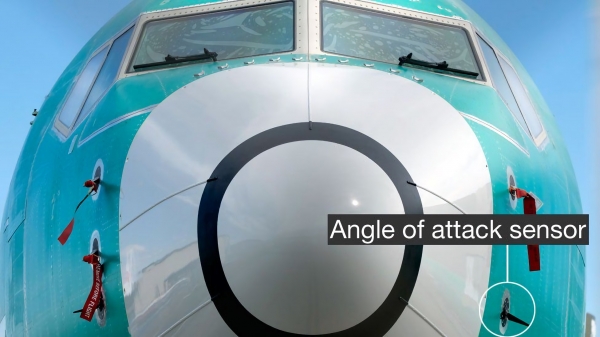
The Boeing 737 Max 8 aircraft, which was involved in two fatal crashes in a five-month period — Lion Air Flight 610 on Oct. 29, 2018 and Ethiopian Airlines Flight 302 on March 10, 2019—has been grounded by airlines and governments around the world with the South Korean government being one of the last ones to ban the aircraft. Although complete crash reports have not been published yet, similarities between the two crashes are pointing to a fault in the MCAS (Maneuvering Characteristics Augmentation System). Boeing has officially taken responsibility and is investigating the cause of the crashes.
The Problem
MCAS is a new software designed to nudge the nose of the plane down when there is a risk of a stall. The software works by reading the angle of flight, or ‘angle of attack’ from sensors attached to either side of the plane’s nose. However, both crashes showed sensors taking conflicting values, triggering the MCAS to keep pushing the nose down. Pilots, confused with this new ‘feature’, tried but failed to disable the MCAS which was setting the plane to dive.
There are two major points of concern. The first is that pilots were not thoroughly informed about the new MCAS. Pilots who originally flew the 737 aircraft were only required to receive a one-hour iPad lesson for the new Max aircraft, and neither the lesson nor the flight manual mentioned MCAS in them. Pilots reported that they were only informed about MCAS after the Lion Air crash.
The second and more fundamental point is that not only the MCAS but the new Max aircraft itself had a faulty design, referred to as a ‘kludge’ by experts. In response to the updated A320neo by its rival company Airbus in 2010, which featured more efficient engines with a larger diameter, Boeing began working on the 737 Max aircraft in 2011. Unlike the A320 aircraft, where the engines could simply be replaced, the Boeing 737 was lower to the ground and larger engines did not fit; to minimize replacement cost, engineers decided to move the engine nacelle higher and more forward on the plane rather than redesigning the plane itself. However, moving the engine nacelle made the plane more unstable at a high angle of attack. This led to the development of the MCAS; this solved the angle of attack problem in most cases, but led to a host of other problems, making it harder for pilots to override the system and control the plane.
In addition, it has been reported that the crashed planes lacked a warning light system that alerts pilots of a fault in the angle of attack sensors and that Boeing sold this warning system as an optional package of equipment. Also, a political question of why such flawed aircraft were allowed to fly in the first place by the Federal Aviation Administration (FAA) is currently being raised.
Boeing’s Response
Boeing has taken full responsibility for the crashes and is actively and transparently investigating the issues with the new Max aircraft. Boeing plans to issue a software patch to limit the number of times MCAS can push the nose down and make it simpler for pilots to troubleshoot the plane. Also, Boeing stated that the cockpit warning light will be included in all aircraft with no additional cost. All in all, aircraft manufacturers and government agencies are reflecting on these two accidents to acknowledge their mistakes and make air travel safer.


